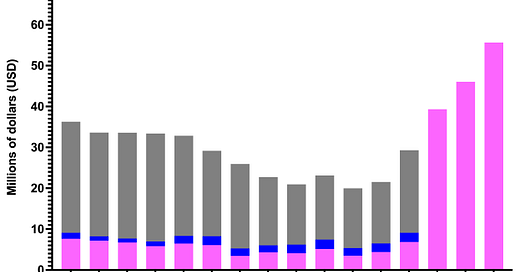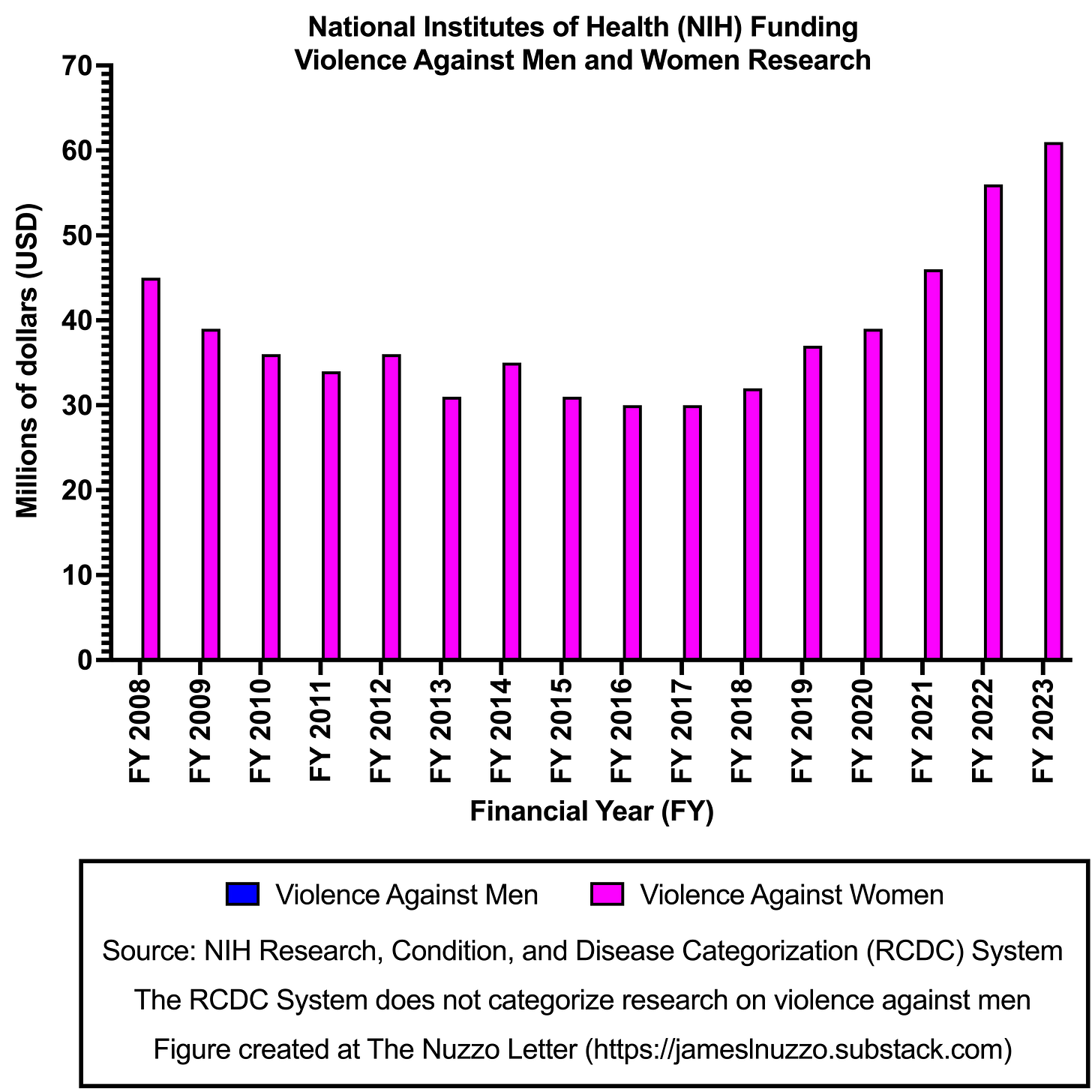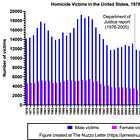This week’s graphs show the amount of money that the United States (U.S.) National Institutes of Health (NIH) invested into research on violence against men or women for financial years (FY) 2007-2025. The data come from two different sources. The first source is the NIH’s Office of Research on Women’s Health (ORWH). Historically, the ORWH publishedbiannual reports detailing funding allocations. The graphed data were extracted from those reports.
The second source is the NIH Research, Condition, and Disease Categorization (RCDC) system. The RCDC system only provides data from FY 2007 forward.
The funding amounts listed by the ORWH and the RCDC system do not always align. Likely, the RCDC system is capturing funded projects that staff at the ORWH do not believe to be specific to women’s health.
Part of the purpose of showing both graphs is to illustrate internal inconsistences and disagreements that occur within government agencies. Irrespective of the source used, the overriding result is the same: research on violence against women receives significantly more funding than research on violence against men.
Source 1: NIH Office of Research on Women’s Health (ORWH)
According to the ORWH, most funding for violence research between FY 2007-2019 was not sex-specific. However, when funding was sex-specific, research on violence against women received more money than research on violence against men (about $5 million per year for women versus $1.5 million per year for men).
A marked increase in funding of research on violence against women occurred in FY 2020-2022, with FY 2020 the last year that data were available from ORWH. In the report where these three years of data were reported, the ORWH, for the first time in its history, chose not to present any data on funding of men’s health research.
Over the 16-year period from FY 2007-2022, research projects on violence against women were awarded $212.6 million by then NIH, while research projects on violence against men were awarded $22.8 million.
Source 2: NIH Research, Condition, and Disease Categorization (RCDC) System
The RCDC system reports significantly higher funding amounts for research on violence against women than does the ORWH.
According to the RCDC system, annual funds for research on violence against women from the NIH have ranged from $30 to $70 million.
Over the 16-year period from FY 2008-2023, the NIH invested $622 million into research on violence against women.
The RCDC system does not have categories for “men’s health” or for “violence against men.” Consequently, no data were available to plot.
Bonus Commentary
The U.S. government has invested significantly more money into research on violence against women than violence against men. To the extent that government funding of a research area improves outcomes in that area, this disproportionate funding is problematic for the following reasons:
Males are more likely than females to be victims of homicide;
Roughly equal proportions of males and females are victims of intimate partner violence;
Males comprise about 1 out of every 3-4 victims of intimate partner homicide;
And violence against men is one reason why male life expectancy in the U.S. is significantly shorter than female life expectancy.
Also, the above data do not represent all sex-specific government spending related to violence prevention. The above data only represent research on violence funded by the NIH. The above data do not include, for example, the program spending budget of the Office on Violence Against Women. This Office on Violence Against Women, which is housed within the U.S. Department of Justice rather than the NIH, has a program spending budget of about $400-$500 million per year.
Related Content at The Nuzzo Letter
SUPPORT THE NUZZO LETTER
If you appreciated this content, please consider supporting The Nuzzo Letter with a one-time or recurring donation. Your support is greatly appreciated. It helps me to continue to work on independent research projects and fight for my evidence-based discourse. To donate, click the DonorBox logo. In two simple steps, you can donate using ApplePay, PayPal, or another service. Thank you!










Thanks for all your work James. I know sometimes It feels like shouting in the desert. But you message will finally get make a difference. (You have a follower, 10,000 miles away).
Best
Thanks James. Gynocentrism marches on and no one notices a thing. Men face hardships and heads are turned away.